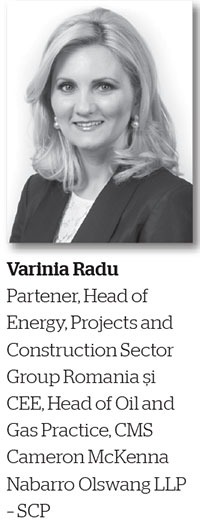A set of circumstances around economic, policy and legislative factors have revived investors’ interest in Romania over the last year in the renewables sector. The second-largest market in Central Eastern Europe, Romania managed to attract about eight billion Euro in renewables investments in the first wave between 2008-2016, mainly solar and wind, benefitting from the green certificate support scheme (totalling over 3 GW in wind and 1,5 in solar capacities).

This past year marked important steps in preparing and announcing this “new wave” of investments. As legislative predictability and clarity is paramount for investors’ confidence, Romania has recently published a draft of a revised Energy Law, aiming to fully transpose the EU Directive 2019/944. The draft law includes provisions bringing important changes to all segments of the production-consumption electricity chain, but notably, is the restructuring of the competitive market, to allow all generators to conclude freely directly negotiated bilateral power purchase agreements, both physical and virtual so that new investments can be backed up by legal instruments to facilitate financing solutions in merchant market conditions. This is also important in the context of Romania announcing last year the intention to implement a new support scheme based on Contracts for Difference mechanism (CfD) for low carbon technologies (including renewables, nuclear, CCS, and potentially others), currently under development by the Ministry of Energy with the support of EBRD, to be in place starting with 2023.

Important changes are brought to the balancing market, both in primary and secondary legislation, as the Romanian Energy Regulator, ANRE, has adjusted the balancing methodology to allow for a single settlement price with an application date correlated with the implementation date of the 15-minutes settlement interval. This new methodology is in force since February 2021 and is deemed to reduce the balancing costs for the intermittent generation capacities.
In addition to these, the Ministry of Energy has announced that is revising the Law for establishing the system for promoting the production of energy from renewable energy sources and that is planning a new support scheme for the investments related to high energy efficiency capacity and energy storage facilities. Under the National Recovery and Resilience Plan, green energy and energy efficiency together became one of the pillars for an economic rebound, providing an initial budget of Eur 1,3 bn. Some other EU funds are available and dedicated to the energy sector as well, such as the Just Transition Fund, Modernisation Fund and others.
Recently, a working group has been established within the Romanian National Bank to support the “green financing” and a set of recommendation are expected to be published to sustainably stimulate green financing (i.e. loans granted by banks for environmental protection, such as loans to reduce energy consumption and pollution), to support a structural change of the Romanian economy based on the climate agenda and greater transparency, better reporting and better social awareness.

In the coming years, we are likely to witness many green energy production projects that will become operational, several international players in the renewable energy sector that will enter the Romanian market, but this enthusiasm of investors will have to be correlated with coherent public policies friendly to the business environment and attuned to the decarbonization targets undertaken by Romania. The capacity of the system to take over the new projects will also require the increase of the interconnection capacity, as well as the development of the networks on the entire territory of the country. According to Transelectrica, the lines and power stations of the national transmission system were built mostly during 1960-1980, at the technological level of that period. The actual technical condition of the installations has so far been maintained at an appropriate level, both by the maintenance program carried out, as well as through a sustained refurbishment program and modernization of facilities and equipment. But for the years to come, system adjustment is paramount, according to an updated analysis on the location of new generation plants and consumption effects generated by the closing of large industrial plants and development of other industrial areas.
Given the context already exposed, it is important to mention that Romania is phasing out coal and that part of the nuclear capacity is unavailable due to refurbishment for a couple of years. Thus, the market data shows that our country needs more generating capacities very soon, being now a net electricity importer. The latest steps related to energy policies and sector legal framework seem to sustain the positive conditions for such new investments. Being at the forefront of these legislative changes due to our active involvement in the Energy Law transposition and the new CfD support scheme implementation, within the advisory consortium managed by the Ministry of Energy with the support of the EBRD, as well as seeing the effervescence in the M&A market for both operational and ready-to-build projects, we note signs of a bold investment cycle to come. This “second wave” is expected to attract massive investment from private sources, from institutional investors, EU grants, state-owned companies, and will benefit of a mature, experienced market and from a greater awareness from all stakeholders on the importance of sustainable “green” investments, towards the accelerated program of a zero -carbon emissions economy.
—————————————-
This article firstly appeared in the printed edition of Energynomics Magazine, issued in June 2021.
In order to receive the printed or electronic this issue of Energynomics Magazine, we encourage you to write us at office [at] energynomics.ro to include you in our distribution list. All previous editions are available HERE.
